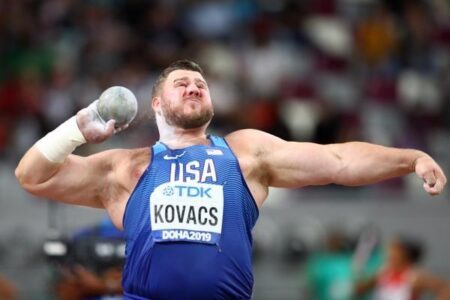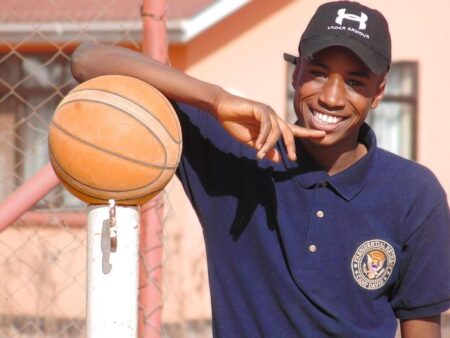Athletes from low-income countries face overwhelming challenges in their pursuit of Paralympic glory, with limited access to resources, training facilities, and support systems placing them at a significant disadvantage on the world stage. Despite remarkable determination and talent, these competitors often struggle to secure the funding and infrastructure necessary to compete on equal footing with their counterparts from wealthier nations. This disparity raises critical questions about fairness and inclusivity in Paralympic sport, as the global community seeks to ensure that opportunity, not economic background, defines athletic success.
Challenges Faced by Athletes from Low-Income Nations in Paralympic Competitions
Financial constraints remain one of the most formidable barriers for many Paralympic athletes hailing from low-income countries. Limited access to quality training facilities, specialized coaching, and adaptive sports equipment significantly hampers their preparation compared to their counterparts in wealthier nations. Often, these athletes must rely heavily on makeshift training environments or outdated prosthetics, which detrimentally affects their competitiveness on the global stage. Moreover, the absence of robust funding mechanisms means many talented individuals cannot participate in essential qualifying events, limiting their exposure and opportunity to compete internationally.
In addition to material shortages, logistical and infrastructural deficiencies pose severe challenges. Inadequate healthcare and rehabilitation services restrict athletes’ ability to recover and maintain peak physical condition. Furthermore, the lack of government and societal support often results in fewer advocacy programs promoting Paralympic sports at the grassroots level. This disparity is highlighted in the table below, showcasing the disparity in resources between Paralympic programs in high-income and low-income countries.
| Category | High-Income Countries | Low-Income Countries | ||||||||||||||||||||||||||||
|---|---|---|---|---|---|---|---|---|---|---|---|---|---|---|---|---|---|---|---|---|---|---|---|---|---|---|---|---|---|---|
| Annual Paralympic Funding | $5 million+ | Under $50,000 | ||||||||||||||||||||||||||||
| Certified Coaches | 50+ | Less than 5 | ||||||||||||||||||||||||||||
| Adaptive Equipment Access | Available & Modern | Scarce & Outdated | ||||||||||||||||||||||||||||
| Category |
High-Income Countries |
Low-Income Countries |
| |||||||||||||||||||||||||||
| Annual Paralympic Funding | $5 million+ | Under $50,000 | ||||||||||||||||||||||||||||
| Certified Coaches | 50+ | Less than 5 | ||||||||||||||||||||||||||||
| Adaptive Equipment Access | Available & Modern | Scarce & Outdated | Impact of Limited Resources and Infrastructure on Paralympic Performance
| Country Type | Average Training Hours/Week | Access to Adaptive Equipment | International Medals (Last 5 Games) |
|---|---|---|---|
| High-Income | 30+ | Full Access | 150+ |
| Low-Income | 10-15 | Limited | 5-10 |
Strategies to Level the Playing Field and Support Underfunded Paralympic Athletes
Innovative funding models are essential to bridge the gap faced by Paralympic athletes from low-income countries. Crowdfunding platforms tailored specifically for Paralympians, coupled with regional sponsorship initiatives, can provide much-needed financial support. Meanwhile, international governing bodies and NGOs are encouraged to establish equipment lending programs and training scholarships targeting talent in under-resourced areas. By decentralizing access and reducing dependency on national budgets, these strategies foster greater inclusivity and improve competitive opportunities.
Capacity building through local coaching education and community awareness campaigns serves as another critical pillar. Empowering grassroots organizations with resources and knowledge enhances athlete identification and development systems at home. Below is a comparative snapshot illustrating how targeted interventions can improve medal prospects for underfunded nations over a four-year Paralympic cycle:
| Strategy | Initial Impact (Year 1) | Mid-Term Results (Year 2-3) | Long-Term Outcomes (Year 4) |
|---|---|---|---|
| Crowdfunding & Sponsorship | +20% budget increase | Improved training access | Enhanced international rankings |
| Equipment Lending | Immediate performance boost | Equipment sustainability | Consistent athlete participation |
| Coaching Education | Strengthened local coaching | Improved athlete pipeline | Higher medal competitiveness |
Final Thoughts
As the Paralympic movement continues to grow on the global stage, the stark disparities faced by athletes from poorer nations remain a pressing concern. Without greater investment, infrastructure, and international support, many talented competitors from these countries will continue to battle not only their disabilities but also the systemic barriers that limit their opportunities. Addressing these inequalities is essential if the Paralympics are to truly embody the ideals of inclusivity and fair competition that underpin the Games. The road ahead demands concerted action from governments, sporting bodies, and the global community to ensure that every athlete, regardless of their economic background, has a genuine chance to compete-and to thrive-on the world’s biggest stage.





